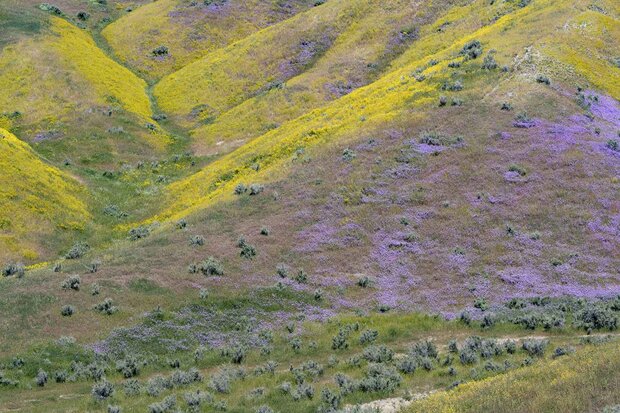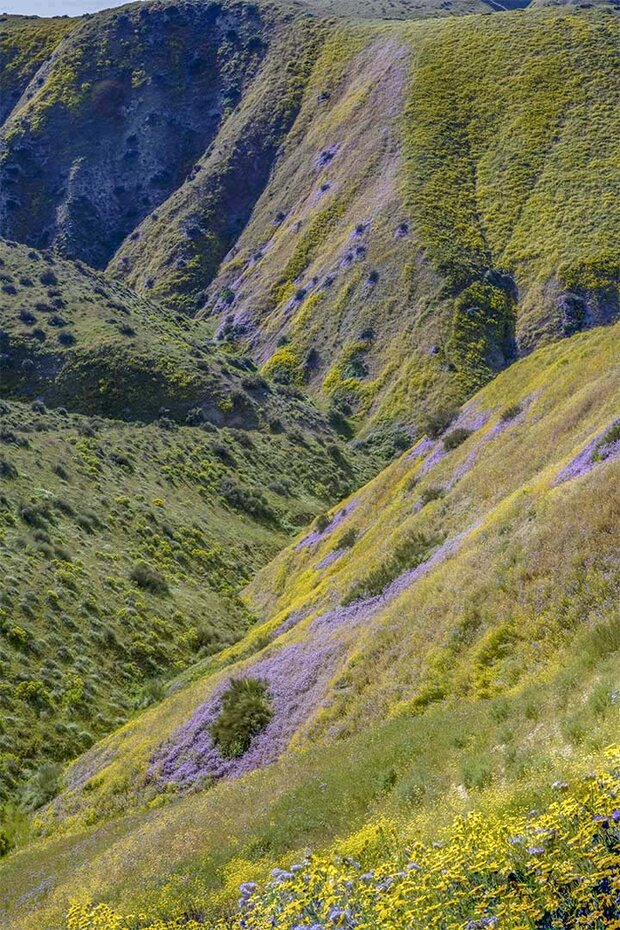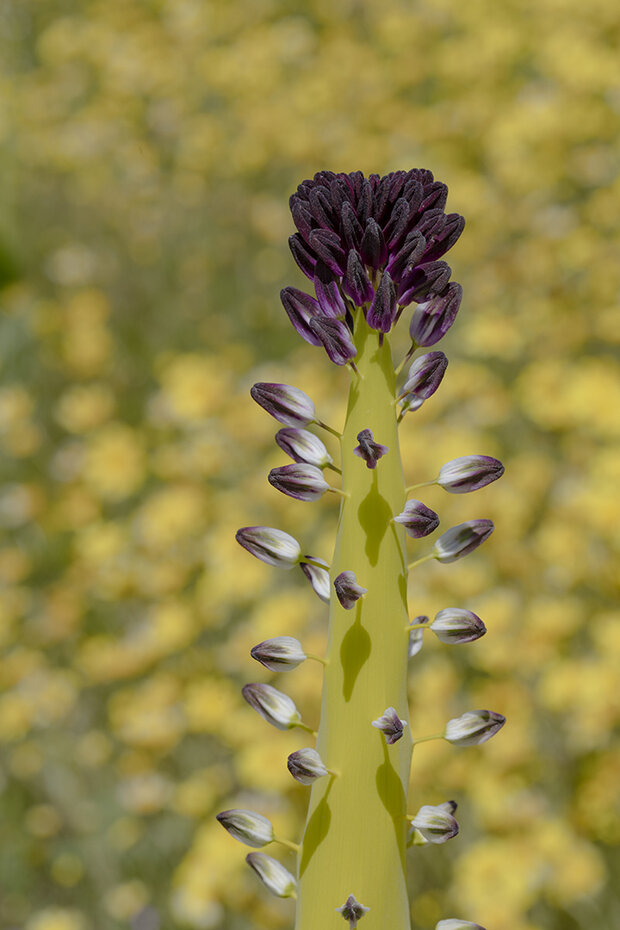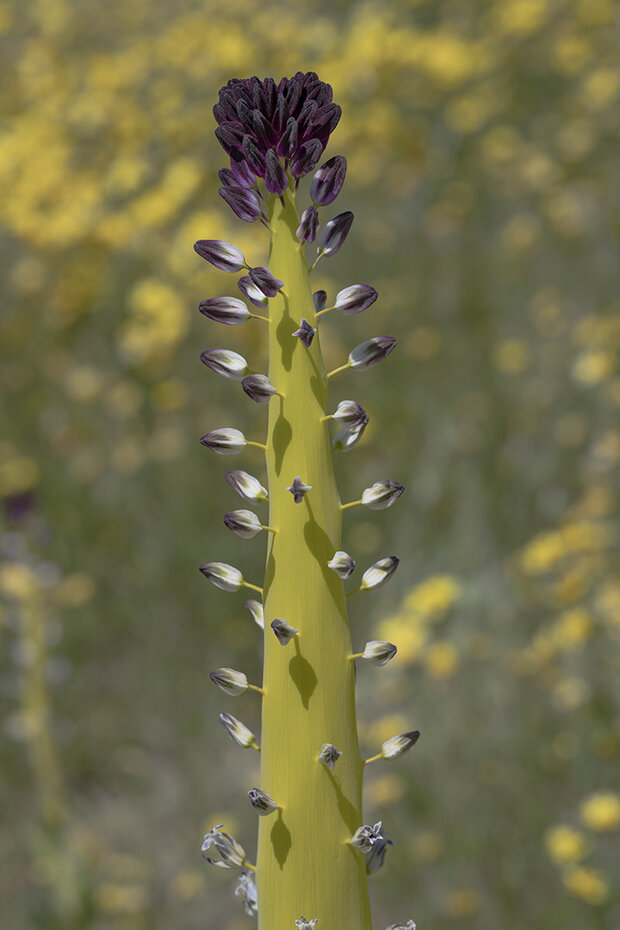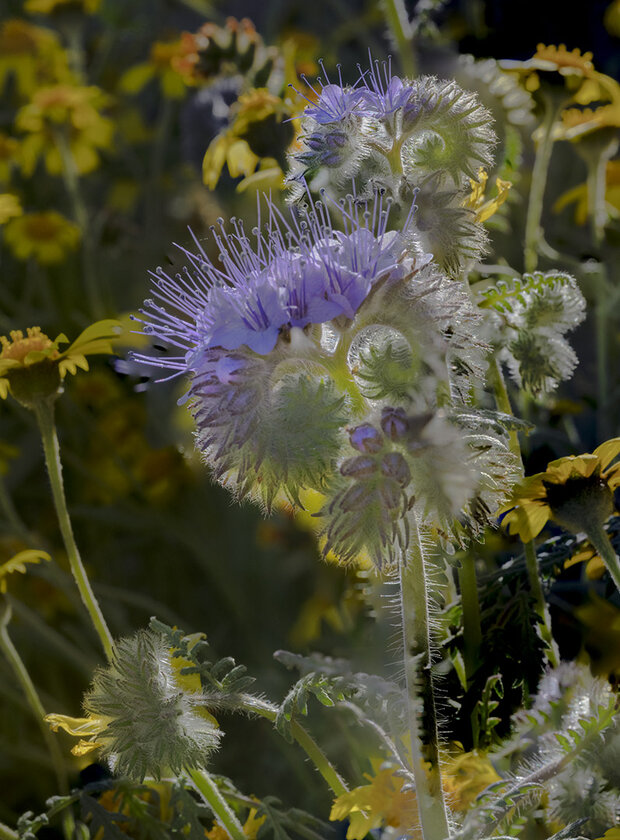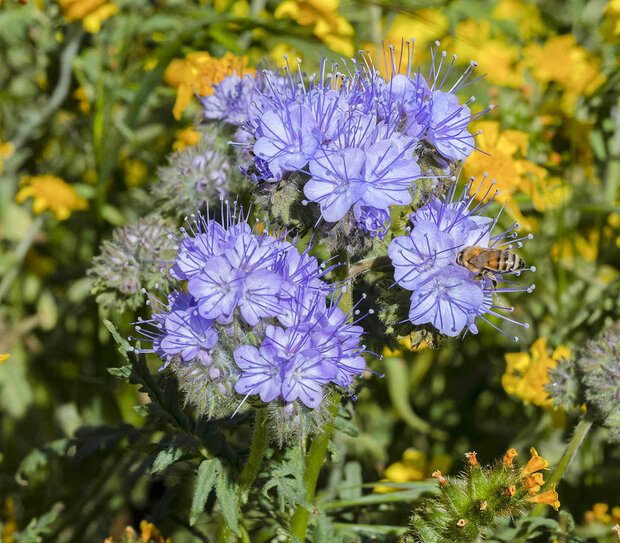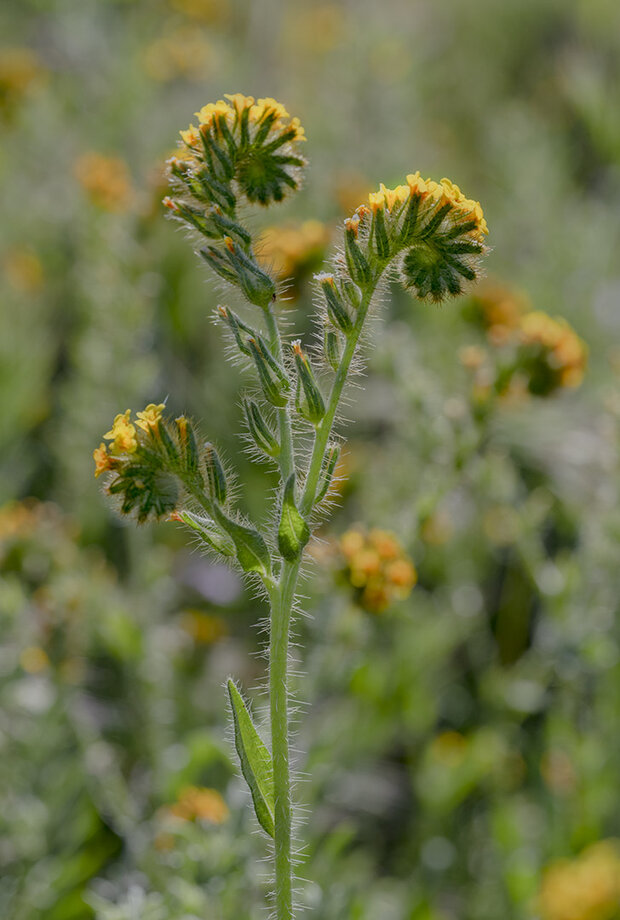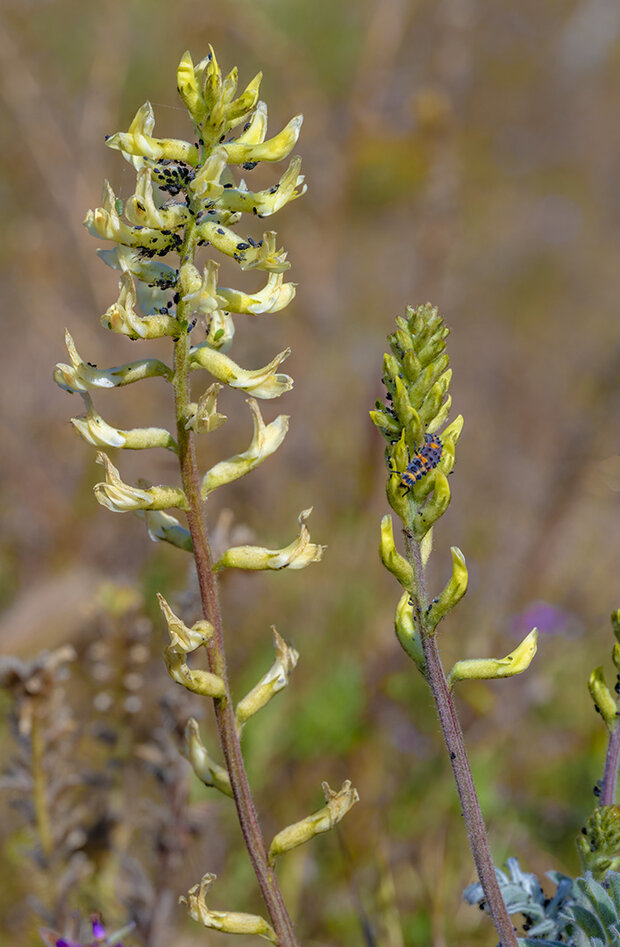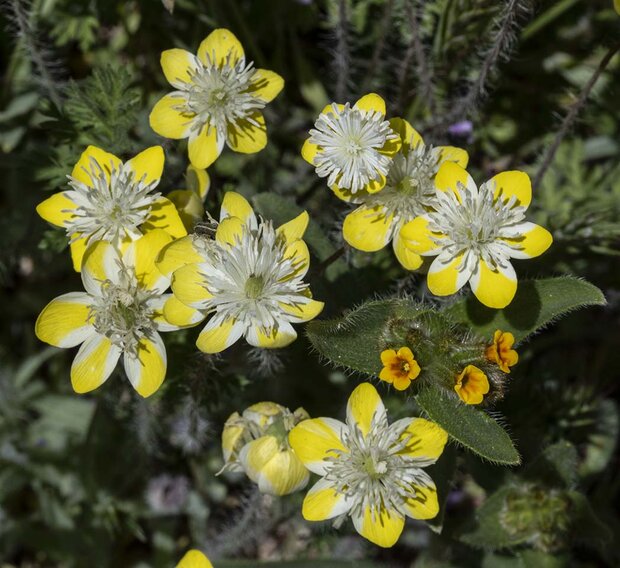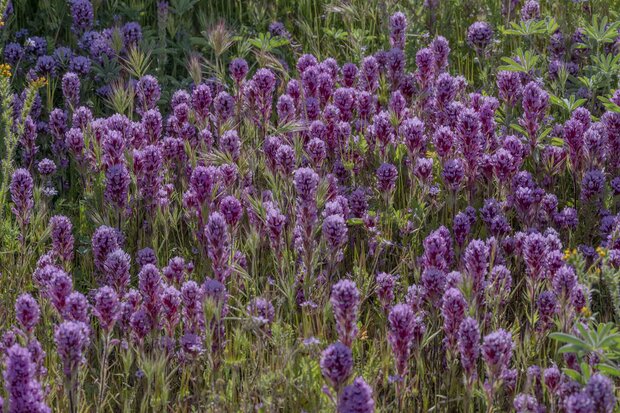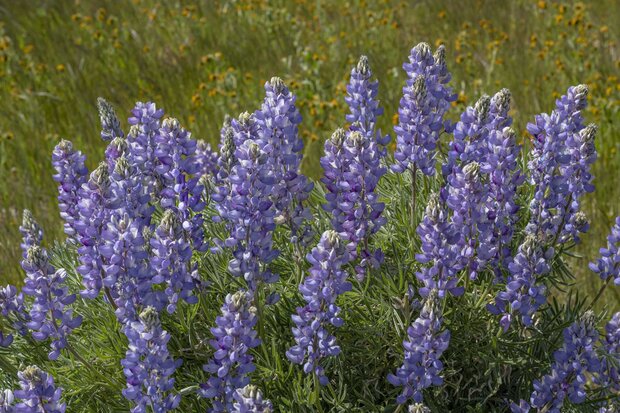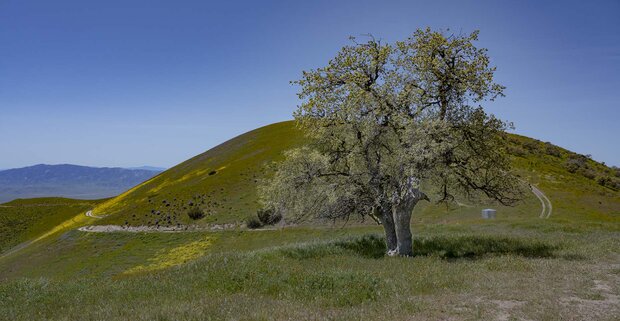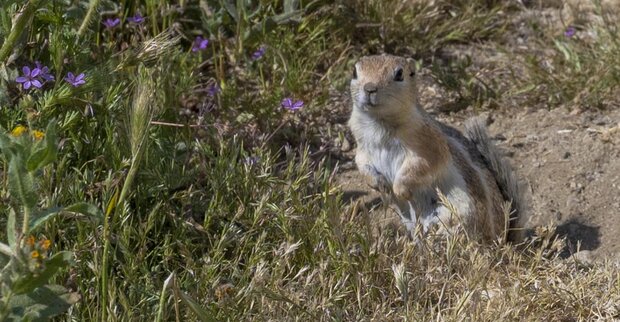Carrizo Plain April 2023
Work Zone
The Carrizo Plain National Monument is known as a place where the San Andreas fault is particularly visible. The fault is located along the foot of the hills from which the first banner photo was taken. Most of the time Carrizo is a quiet lightly traveled place, but a wet year creates a prolific blooming which attracts visitors in the thousands.
Soda lake down in the valley is usually a glaring white salt flat, only blue like that for a few months in a wet year. A guy who was really into the plants informed me that the plant with the thick hollow stem topped by a tuft of flowers, so deep purple it seemed like they sucked up light, is a brassica, a relative of broccoli, cabbage, etc.
There is a lesson in the manipulation in art in several of the landscape images. If I turned in the opposite direction there was a view of the industrial clutter of the McKittrick oil field in the San Joaquin valley. I could hear its pumps at night, and the glare of valley lights dimmed the stars. The image of the purple flowers where you can see into the whirls is a demonstration of my skill. In contrast the last image of blue lupine & yellow asters is an out of focus mistake. I put it in masochistically to taunt myself, but I'll try to pass it off as deliberate impressionism.
It was a time of bugs, rodents, snakes, meadowlarks, ravens, and the smell of fresh green grass. And . . . I saw a San Joaquin Kit Fox. Having arrived in the dark, as I often do on the first night, I was driving dirt roads looking for a camp spot. I was contemplating a phenomena I have seem many times before in that situation here in The West. Birds were flying in front of me in the headlights. At first I assumed they were frightened, fleeing. But they had plenty of opportunity to swoop away out of the lights. Maybe the lights created a zone they felt trapped in and didn't realize they could simply fly into the dark. But then I noticed they would sometimes land in the road, seeming to be waiting for me to catch up with them. I think they use my disturbance to stir up bugs to eat.
Then I came across a critter with big ears running ahead in my lights. I assumed it was a jackrabbit, but when I got closer I could see it was a small fox. I also assumed it would flee into the tall grass but, like the birds, when I stopped it stopped, seemingly not much afraid of me & my car lights. After a minute I saw it freeze in attention, eyes & big ears focused on something in the grass. It took a tense step or two forward, cocked its rear legs, and made a powerful leap into the grass. Some little mouse or bird may have become a meal. They are tiny little critters, the size of a small cat, and irresistibly cute.
Reflecting on the ordinariness of that sighting, I realized that whenever you hear the phrase "endangered" it is not the animal or plant that is endangered, it is always the habitat.
It was a time of bugs, rodents, snakes, meadowlarks, ravens, and the smell of fresh green grass. And . . . I saw a San Joaquin Kit Fox. Having arrived in the dark, as I often do on the first night, I was driving dirt roads looking for a camp spot. I was contemplating a phenomena I have seem many times before in that situation here in The West. Birds were flying in front of me in the headlights. At first I assumed they were frightened, fleeing. But they had plenty of opportunity to swoop away out of the lights. Maybe the lights created a zone they felt trapped in and didn't realize they could simply fly into the dark. But then I noticed they would sometimes land in the road, seeming to be waiting for me to catch up with them. I think they use my disturbance to stir up bugs to eat.
Then I came across a critter with big ears running ahead in my lights. I assumed it was a jackrabbit, but when I got closer I could see it was a small fox. I also assumed it would flee into the tall grass but, like the birds, when I stopped it stopped, seemingly not much afraid of me & my car lights. After a minute I saw it freeze in attention, eyes & big ears focused on something in the grass. It took a tense step or two forward, cocked its rear legs, and made a powerful leap into the grass. Some little mouse or bird may have become a meal. They are tiny little critters, the size of a small cat, and irresistibly cute.
Reflecting on the ordinariness of that sighting, I realized that whenever you hear the phrase "endangered" it is not the animal or plant that is endangered, it is always the habitat.
.


